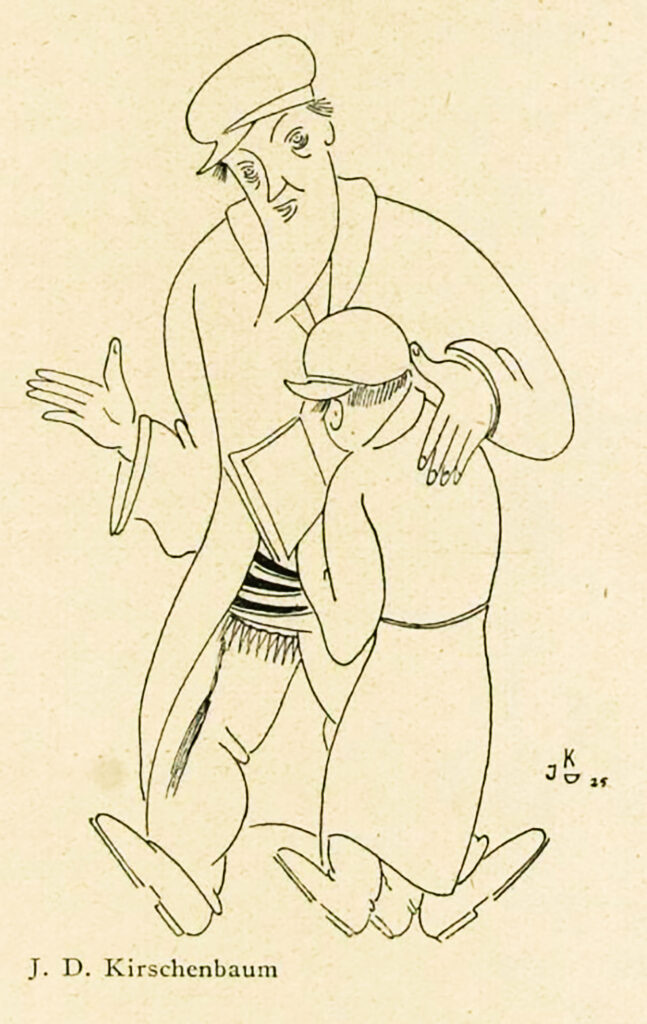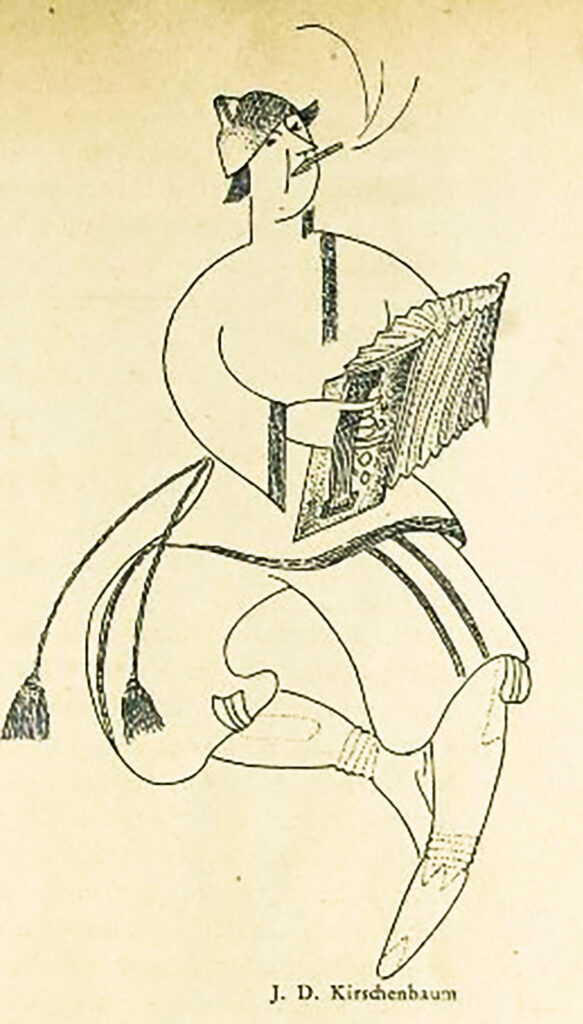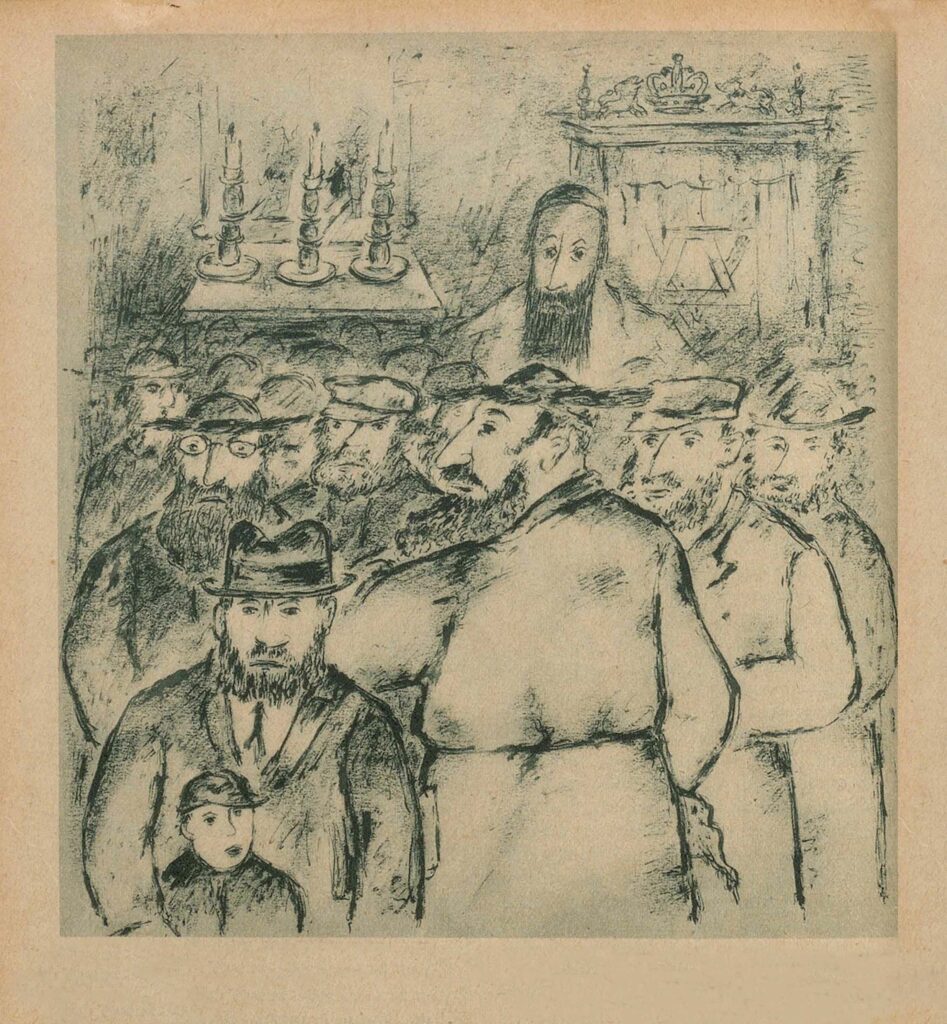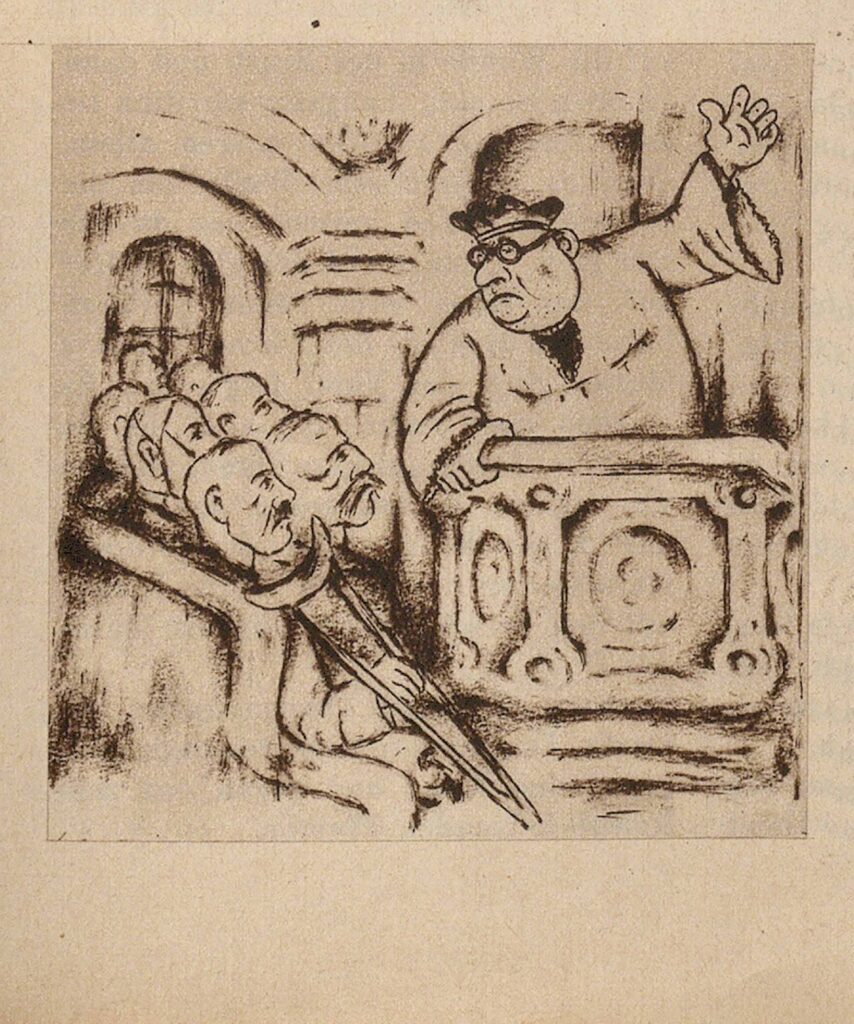Illustrations in “Querschnitt” and in “Magazin für Alle”
In addition to caricatures, Kirszenbaum provided illustrations for various articles in the magazine Querschnitt (Cross section). These were signed with the artist’s name, in contrast to Kirszenbaum’s caricatures. Almost all of the illustrations reminisce about Kirszenbaum’s origins as a Jew living in Russian-occupied Poland. The drawings were presumably not commissioned specifically for the individual articles but were generally available to the editorial staff, who then selected them for the articles which seemed appropriate.
Illustrations in “Querschnitt” and in “Magazin für Alle”
In addition to caricatures, Kirszenbaum provided illustrations for various articles in the magazine Querschnitt (Cross section). These were signed with the artist’s name, in contrast to Kirszenbaum’s caricatures. Almost all of the illustrations reminisce about Kirszenbaum’s origins as a Jew living in Russian-occupied Poland. The drawings were presumably not commissioned specifically for the individual articles but were generally available to the editorial staff, who then selected them for the articles which seemed appropriate.
A Jew as a Guru
In Keyserling’s Tagore-Shau, Lily Pringsheim (1887–1954), a representative of the Social Democratic Party in the Hesse Landtag, reported about the presentation of an Indian sage in the castle gardens of Darmstadt, a story which particularly impressed children. Since the Querschnitt editors probably did not have a drawing of an Indian man, they used Kirszenbaum’s drawing depicting a Jew with a tallit, a prayer shawl, instead.
Stalin only seemingly overcome
A harmonica player was used as an illustration for an article by S. Dimitriyevsky: “Stalin – Rise of a Man.” After Lenin’s death in 1924, Josef Stalin (1878–1953) became the undisputed autocrat of the Soviet Union. Stalin’s rule was associated with the brutal elimination of all political opponents and millions of civilian deaths. The author sees the work of “the most terrible despot” in 1931 as a necessary and past “stage of the revolution.” Nevertheless, in the two decades after the revolution, Stalin would be responsible for countless show trials to eliminate political opponents and the Katyn massacre of Polish officers and intellectuals in 1940.
Illustrations for the “Magazin für Alle”
In 1932, Kirszenbaum also illustrated several stories for the Communist Magazin für Alle (Magazine for All). These illustrations were accredited both to “Kirschenbaum” and to “Duwdiwani,” and were coordinated with the content of the stories.
God's Law?
The Hungarian book artist Nándor Pór (1898–1938?) describes in a story how a deeply religious Jewish butcher is expelled from the synagogue due to the personal interests of a Rabbi. The butcher loses his identity as a result of this expulsion.
Homecoming
Willi Köhler (1907–1977) tells about a pastor who disparages wounded war veterans from the pulpit, saying that “the good [soldiers] stay on the battle field of honor.” The injured veterans leave the service with their families in protest.
Laurence Danguy: L’ange de la jeunesse. La revue Jugend et le Jugendstil à Munich. Paris 2009.
Dietrich Grünewald: Studien zur Literaturdidaktik als Wissenschaft literarischer Vermittlungsprozesse in Theorie und Praxis. Zur didaktischen Relevanz von Satire und Karikatur. Verdeutlicht an der satirischen Zeitschrift Eulenspiegel / Roter Pfeffer 1928–1933. Gießen 1976.
Wilmont Haacke / Alexander von Baeyer (Hg.): Der Querschnitt – Facsimile Querschnitt durch den Querschnitt 1921–1936. Frankfurt a. M. 1977.
Heinz Lorenz: Die Universum-Bücherei. Geschichte und Bibliographie einer proletarischen Buchgemeinschaft. 1926–1939. Berlin 1996.
Peter de Mendelssohn: Zeitungsstadt Berlin. Menschen und Mächte in der Geschichte der deutschen Presse. Berlin 1959.
Dieter Schiller: »Propaganda als Waffe« – Kurt Kersten / Willi Münzenberg (= Pankower Vorträge 96). Berlin 2007.
Stephan Steins: Zur Geschichte der Roten Fahne 9. November 1918–2018. 100 Jahre Die Rote Fahne. In: Die Rote Fahne. Sozialistisches Magazin. 2018
Online: https://rotefahne.eu/Geschichte/#2000–2003.
Rolf Surmann: Die Münzenberg-Legende. Zur Publizistik der revolutionären deutschen Arbeiterbewegung 1921–1933. Köln 1982.
Eine laufend aktualisierte »Bibliographie Caricature & Comic« bei arthistoricum.net
Online: https://biblio.ub.uni-heidelberg.de/caricature/



